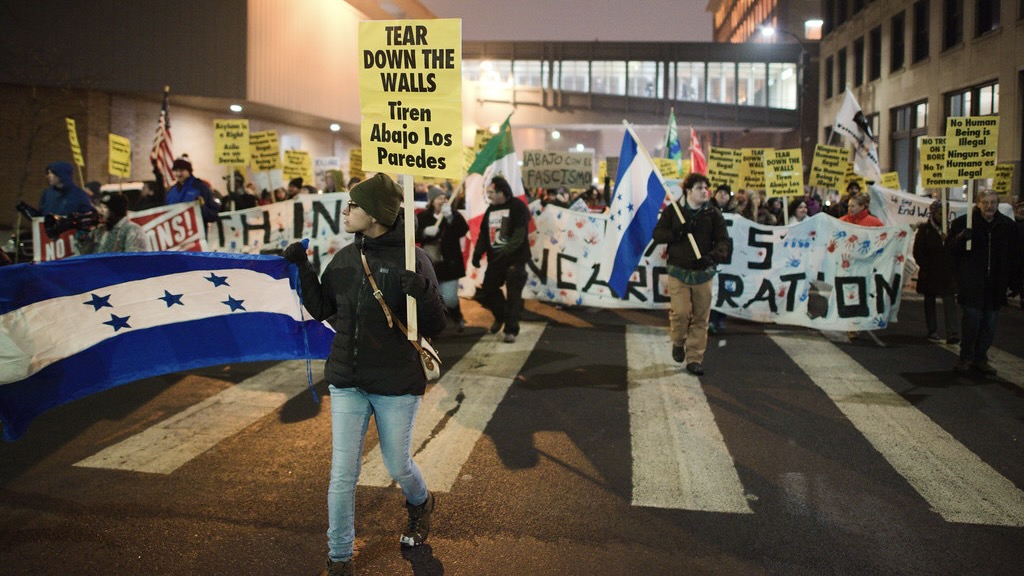On Tuesday, February 21, US President Joe Biden announced a policy proposal that would largely bar migrants who passed through other countries on their way to the US from securing asylum. This “transit ban” was proposed by the Trump administration but struck down by courts multiple times.
This newest policy proposal is set to go into effect on May 11, after a 30-day public comment period if it is not similarly struck down. May 11 is a significant date as it is when the Trump-era Title 42 immigration restrictions will expire, which used the COVID-19 health emergency as an excuse to allow immigrants to be swiftly expelled to Mexico. If taken into effect, Biden’s proposed policy would last two years. This is the strictest immigration policy that Biden has enacted thus far.
The proposal would force migrants to first seek and be denied asylum in each country they pass through before entering the US, in order to be eligible for asylum. Asylum seekers would also be required to make an appointment with an immigration official through an app, CBP One, in order to be eligible for asylum and avoid swift deportation.
Migrant advocates insist that these are absurd requirements that pose unnecessary logistical difficulties on immigrants. CBP One is only available in English and Spanish, creating a language barrier for non Spanish-speaking immigrants such as Haitians, for example, who represent the third largest national group seeking US (affirmative) asylum, following Venezuela and Guatemala. The software for the app is also reportedly glitchy and overloaded with thousands of immigrants trying to schedule appointments, forcing people to wake up at the crack of dawn to secure a slot, if they’re lucky.
Applying for asylum in Central American countries as well as Mexico also poses unnecessary difficulties, which often contend with the same “dangerous conditions” that migrants are fleeing from, Daniel Flores of the Council of Mexican Federations in North America (COFEM) told Peoples Dispatch.
“For example, places like Mexico, Guatemala, have very limited systems that don’t really have the capacity to handle the traffic of applications coming from the immigrant communities. They have a limited amount of judges. They have a limited amount of courtrooms,” Flores said.
“The asylum system is meant for people to seek protection in a place where they feel safe,” Alaide Vilchis Ibarra, Director of the Value Our Families Campaign told Peoples Dispatch. “It shouldn’t be up to our systems to decide where people feel safe.”
Biden’s move is not an outlier. The proposed policy places unnecessary, and some would say cruel, restrictions on asylum seekers. In this way, it is not dissimilar to restrictive policies such as Trump’s Title 42, or pushes for border militarization in the past few decades. After the North American Free Trade Agreement (NAFTA) destabilized Mexico’s agricultural economy and precipitated the decadeslong migrant crisis at the US’s southern border, President Bill Clinton launched Operation Gatekeeper to restrict and deter immigration through border militarization.
In the 20 years since it was launched, US immigration policies have caused the deaths of possibly more than 29,000 according to Border Angels, whether at the hands of border control, dehydration and exhaustion, criminal violence, or other causes. Even conservative estimates indicate approximately a death a day since the inception of Operation Gatekeeper. Since 2010, over 250 people have died as a result of an encounter with a Customs and Border Protection (CBP) officer. No CBP officer has ever been convicted of a killing while on duty. US officials have all but admitted that in terms of policies for containing immigration, cruelty was an effective deterrent. “We did believe that geography would be an ally to us… It was our sense that the number of people crossing the border through Arizona would go down to a trickle once people realized what it’s like,” said former commissioner of Immigration and Naturalization Service (INS) Doris Meissner in 2000.





